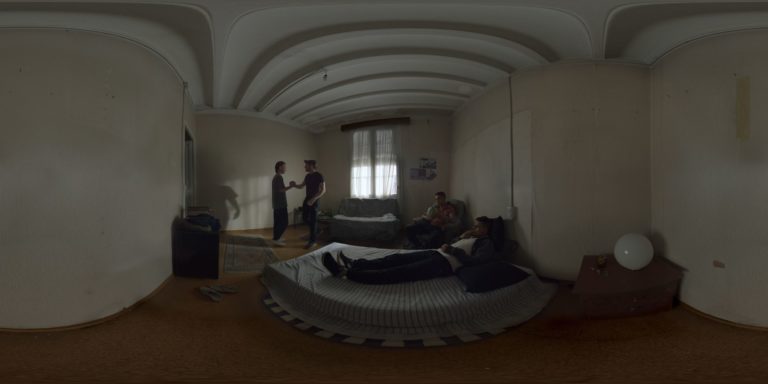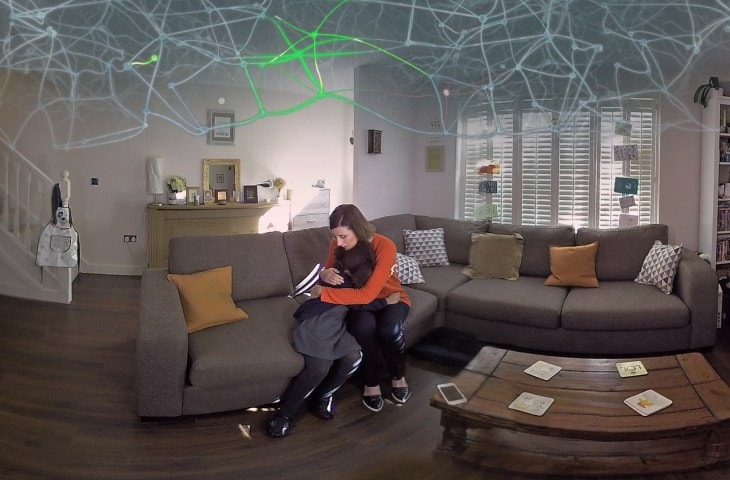UK Social enterprise pilots use of immersive tech in social care.
Over the past five years, the number of children who are looked after by Local Authorities (LAs) and children who require child protection plans to be kept safe from ‘significant harm’ has increased dramatically in England. And while demand for foster carers and adopters has also increased, the number of approved adoptive families has been on a steady decline.
To help tackle these difficult and complex issues, London-based social enterprise The Cornerstone Partnership has partnered with Immerse UK to test the use of VR as an intervention tool across adoption and fostering services.
While demand for foster carers and adopters has increased, the number of approved adoptive families has been on a steady decline Share on XLaunched in October 2017, their Virtual Reality Programme (CVR) was implemented to improve the life chances of children in care and those who have experienced attachment-related trauma. CVR uses virtual reality technology to change how professionals (including social workers, child and adolescent mental health workers, teachers, and judges), adopters and fosters carers understand and interact with vulnerable children.
Cornerstone VR is using immersive technology within social care to accelerate understanding of trauma and neglect and drive behaviour change in those who have contact with Children in and on The Edge of Care. It works with local authorities across the UK using a VR Library which includes 12 episodes of high impact immersive content designed for use within adoption, fostering and wider children’s services.
Cornerstone's Virtual Reality Programme was implemented to improve the life chances of children in care and those who have experienced attachment-related trauma Share on XThe outcomes for children who are in or have been in care are significantly worse than their peers across all key areas; education, health, career, rough-sleeping and mental health. The reasons for that are complex but it is fundamentally about how we as adults and professionals get children on to the right path, quickly and with support, empathy and true understanding. By helping carers better understand these children, we can help prevent huge costs – both financial and emotional – associated with issues such as care breakdowns, education, crime, and mental health issues.
CVR uses virtual reality technology to change how professionals, adopters and fosters carers understand and interact with vulnerable children Share on XPreliminary results from the 12-month pilot paint a very promising picture of Cornerstone VR’s potential to improve decision making and understanding of trauma, children’s emotions and potential triggers that can help practitioners and policy makers implement more effective solutions.
“We’ve spent 18-months developing and perfecting the application of VR in order to shift understanding and alter engrained behaviours across a raft of settings in children’s social care,” explains Helen Costa, Cornerstone CEO. “The fact that our VR tool has shown impact in such a short space of time is beyond all our hopes and expectations. Crucially it illustrates the power of immersive technology in solving complex social issues.”
“The VR which has been developed and applied by Cornerstone shows how foster carers, adoptive carers and parents can understand the impact of major family issues like neglect and domestic abuse much quicker and in a much deeper way through being immersed in a VR experience, than is possible through conventional learning programmes,” says Anthony Douglas, Chair of Cornerstone’s Advisory Board”
Research indicates that VR content receives 27% higher emotional reaction that 2D content and engagement is 34% longer. Alma Economics worked with the Cornerstone Partnership to evaluate the impacts and value for money implications of using virtual reality technology in these settings, and some impressive statistics emerged.
We’ve spent 18-months developing and perfecting the application of VR in order to shift understanding and alter engrained behaviours across a raft of settings in children’s social care Share on X
A majority of social workers felt CVR helped improve their own understanding of trauma and stated that they will be doing things differently as a result of the training. 40% of participants said that it helped them gain insights and develop skills that would lead to better decisions. Close to half of all participants believed CVR can help prevent adoption breakdown, while over 90% expected CVR to have a positive impact on their case study. Nine out of ten participants said CVR will lead to changes to the type of support they offer to children and their carers. Over 90% of participants felt that CVR – by providing a window into trauma and children’s emotions – can play a key role in attracting the right type of adopters and foster carers.
“I strongly believe that VR can have a positive impact on many of the social issues we face in Britain today, like excessive alcohol consumption, obesity, gambling addiction and crimes against the person. If courageous investments are made, the long-term savings both in expenditure and human misery will in my view be high,” says Douglas.
The hope is that this immersive therapeutic support can help change behaviour by generating ‘emotional understanding’ and empathy resulting in a positive impact on the relationship dynamic between the adult and the child. With a more resilient adult child relationship, families can be kept together, and placement breakdowns can be avoided.
“Using technology as a behaviour change tool has enormous potential for some of our biggest societal challenges – whether that be tackling knife crime, obesity, or climate change. The common theme running through all of this is altering behaviour and I am delighted that we have found a way to harness the technlology and show real results with real impact,” Costa concludes.
This article originally appeared on VRScout
Cornerstone Partnership Uses VR As An Intervention Tool via @alicebonasio https://t.co/zSHpyshqHV pic.twitter.com/zQEzjjuHsY
— VRScout (@VRScout) February 14, 2019
Tech Trends offers a broad range of Digital Consultancy services to guide companies, individuals and brands in effectively leveraging existing and emerging technologies in their business strategy.
Alice Bonasio is a VR and Digital Transformation Consultant and Tech Trends’ Editor in Chief. She also regularly writes for Fast Company, Ars Technica, Quartz, Wired and others. You can follow @alicebonasio on Twitter, connect with her on LinkedIn or subscribe to her Inside VR/AR Newletter for all the latest curated immersive news.









